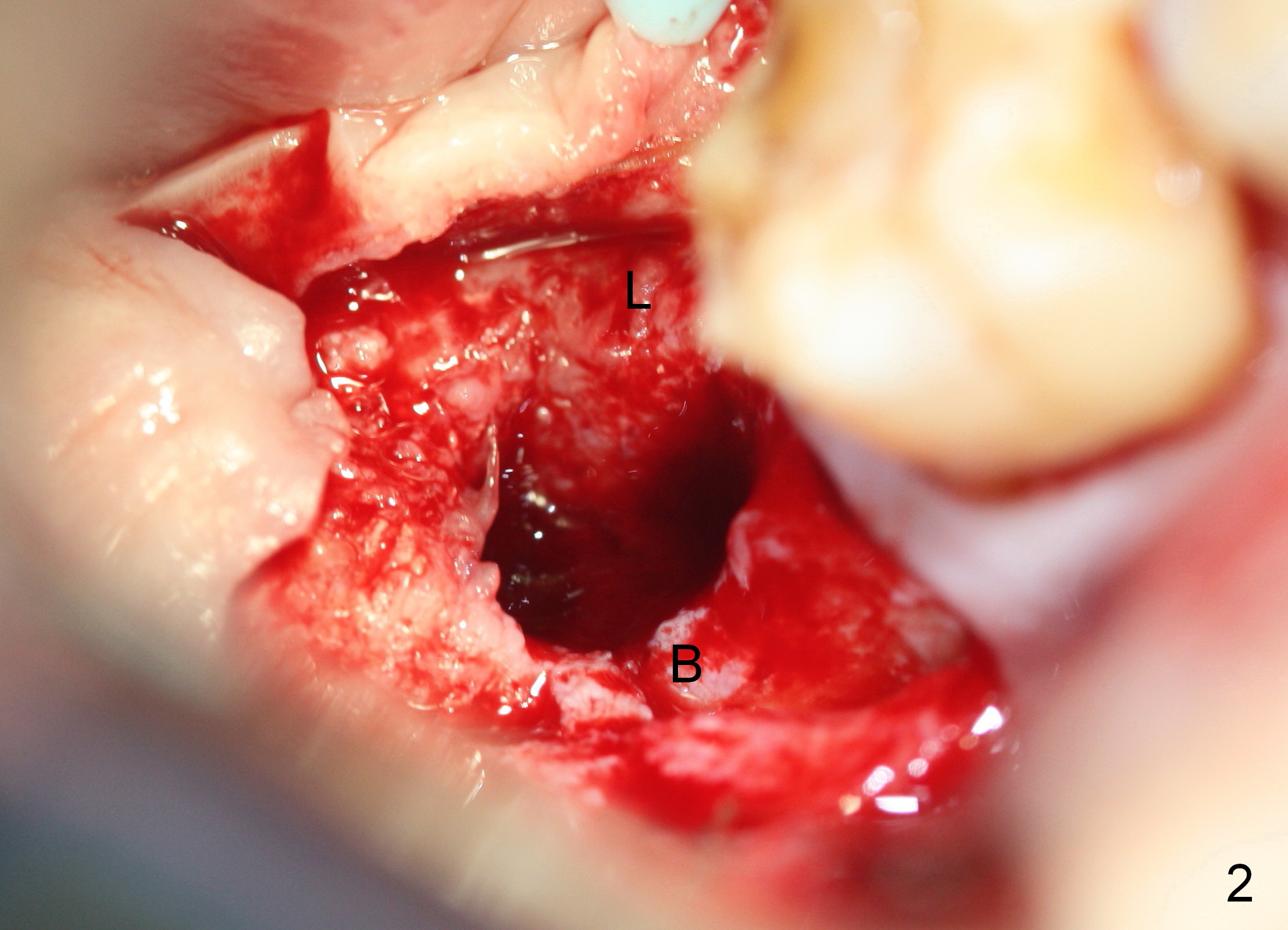
 |
When the site is exposed half a month later and after granulation tissue curettage, the buccal plate is found to be low and thin (Fig.2 B). It may be caused by the 1st flapless placement. The implant must have been placed buccally. Or the implant is too wide for the ridge (7 mm).
The lingual plate is relatively thick (L).
A long, but small implant is expected to achieve primary stability. In order to prevent the rescue implant from buccally tilting again, the coronal portion of the lingual plate (inner surface) should be removed in a proper amount.
Xin Wei, DDS, PhD, MS 1st edition 02/24/2015, last revision 02/24/2015